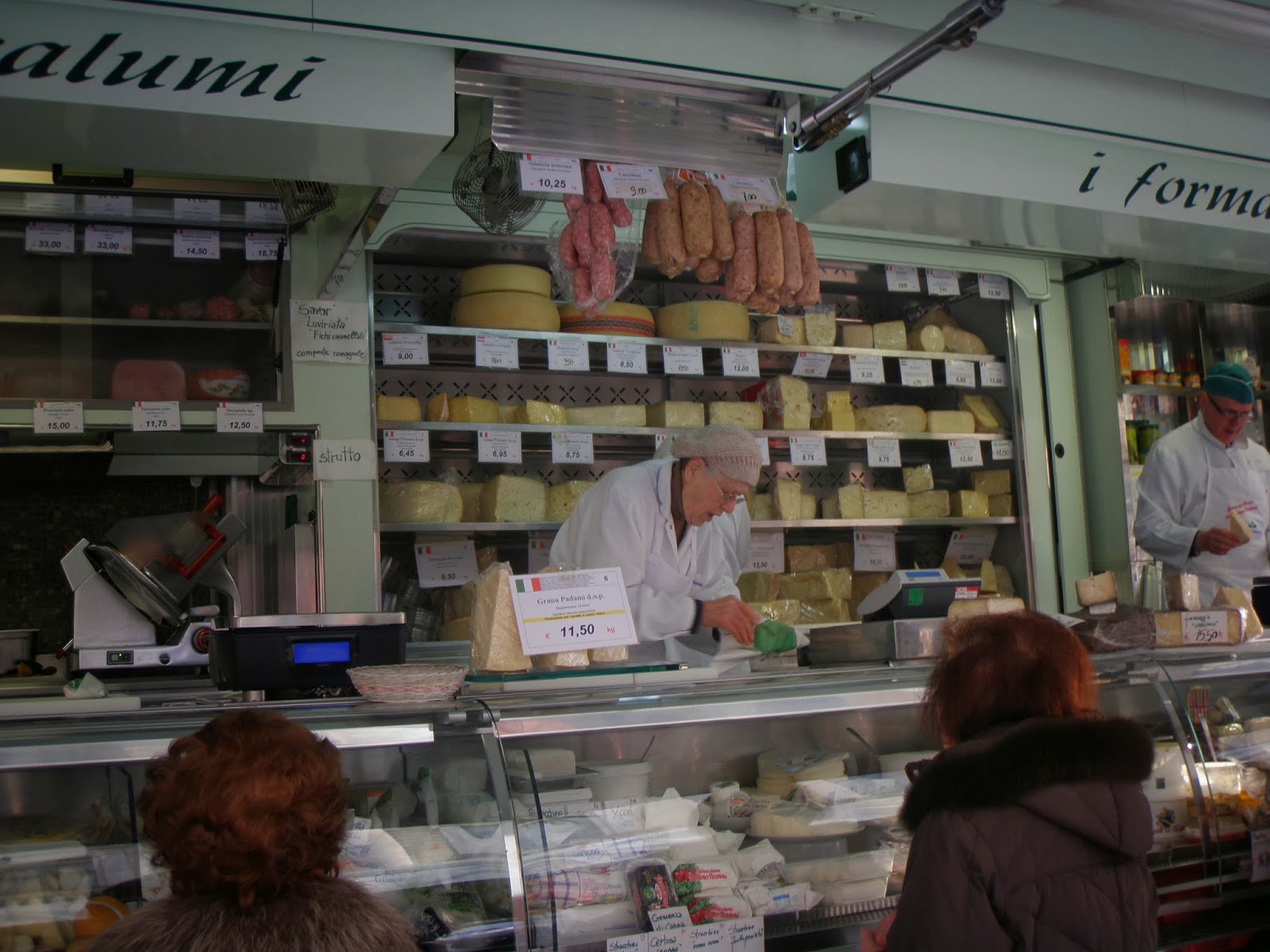Thursday, from 7:30 up to 13:00, is market day in Vicenza
Saintpaulias,
commonly known as African violets
Primroses galore!
Furniture and curtains
The market is a good place to meet friends for a chat
Giovedi è giorno di mercato a Vicenza e il
vivace e colorato mercato di strada porta la città alla vita. Come potete
vedere le bancarelle sono davvero tante sparse tra Piazza dei Signori, Piazza
Castello e anche lungo Viale Roma. Anche qui ci sono ambulanti cinesi,
specialmente lungo Viale Roma, ma complessivamente il mercato è ancora nelle
mani dei commercianti locali. I prodotti sono quelli del territorio: fiori,
frutta, cibo da asporto, pesce, carne, abbigliamento, scarpe, tende, tappeti e anche alcuni
mobili originali. Il mercato è decisamente un ottimo posto dove andare a caccia
d’affari!
Cheeses and salamis
vegetables
Street performers
Winter is a wonderful time for eating risotto and in particular the creamy pumpkin risotto! Here's the recipe:
Pumpkin
risotto (for 4 persons)
Ingredients:
1
shallot
4/5
tablespoons of olive oil
½ glass of dry white wine
A sprig of rosemary
About 1 ½ lt vegetable stock
1 teaspoon vegetable stock granules
Prepare the vegetable stock with a large white
onion, 2 carrots, 2 stalks of celery, a bunch of parsley, a zucchini and a big potato. Chop
the vegetables and place them in a large pot and cover with about 2 lt water. Bring
to a boil, reduce the heat and simmer for at least and hour until the
vegetables are tender. Strain out the vegetables, flavour with the vegetable
stock granules and keep the stock warm over low heat.
Peel the shallot, chop it finely and put it in a pan with some olive oil
over low heat for about 5 minutes, then add the diced pumpkin and the rosemary
finely chopped, salt, pepper and some water and let simmer until the liquid has
evaporated and the ingredients have blended in well. Turn off and set aside. Prepare the rice and discard any impurity. Do not soak or rinse the rice before cooking. Put
a little oil in a pan and toast the rice on high heat for about 2 minutes,
stirring with a wooden spoon. Pour in the wine, let it evaporate and
then lower the heat and continue to cook the risotto by adding two ladles of warm vegetable stock. Stir in the pumpkin and shallot mixture, add another
couple of ladles of stock, stir and let evaporate before adding more stock. The
rice will take about 17 minutes or more to cook (according to one’s taste). You
may not need all the stock, but the texture should be loose and creamy. When
the risotto is almost done turn off the heat, blend in the diced taleggio and
the grated parmesan cheese and stir well util the taleggio has melted. Let the
risotto stand for about a minute or two before serving.
400
g
di riso Vialone nano 300
g
di zucca tagliata a dadini100
g
di formaggio taleggio 50
g
di parmigiano grattugiato
Pumpkin risotto
A casa mia mangiamo il risotto almeno una
volta alla settimana e d’inverno amo cucinare il cremoso e delicato risotto con
la zucca! Ecco la ricetta :
Risotto con la zucca ( per
4 persone )
ingredienti:
1 scalogno
4/5 cucchiai di olio d'oliva EVO
½ bicchiere di vino bianco secco
Un rametto di rosmarino
Circa 1 ½ lt di brodo vegetale
1 cucchiaino di dado vegetale granulato
Preparate il brodo vegetale con una cipolla
bianca, 2 carote, 2 gambi di sedano, un mazzetto di prezzemolo e una patata. Tagliate
le verdure a pezzetti, mettetele in una pentola
e coprite con circa 2 lt di acqua. Portate ad ebollizione, abbassate la fiamma
e lasciate cuocere per almeno un'ora, fino a quando le verdure sono tenere. Filtrate
il brodo e aggiungete un cucchiaino di dado vegetale granulato e mantenete il brodo
caldo tenendolo su un fuoco basso.
Tritate finemente lo scalogno e fatelo
appassire dolcemente in una padella per circa 5 minuti, quindi aggiungete la
zucca tagliata a dadini, il rosmarino tritato finemente, sale, pepe e un po’ d’acqua.
Mescolate e lasciate cuocere a fuoco
lento finché l’acqua è evaporata e gli ingredienti si sono amalgamati bene. Spegnete
il fuoco e tenete da parte. Mondate il riso eliminando ogni eventuale impurità.
Mettete un po’ d’olio in una padella e tostate il riso a fuoco vivace per circa
2 minuti, mescolando con un cucchiaio di legno. Versate il vino, fatelo
evaporare e poi abbassate la fiamma. Continuate la cottura del risotto
aggiungendo due mestoli di brodo vegetale caldo. Aggiungete la zucca e un altro
paio di mestoli di brodo e continuate la cottura come di consueto. Quasi a cottura ultimata spegnete il fuoco e
mantecate con il taleggio tagliato a pezzetti e il parmigiano. Lasciate riposare il risotto per un
minuto o due prima di servire.












































